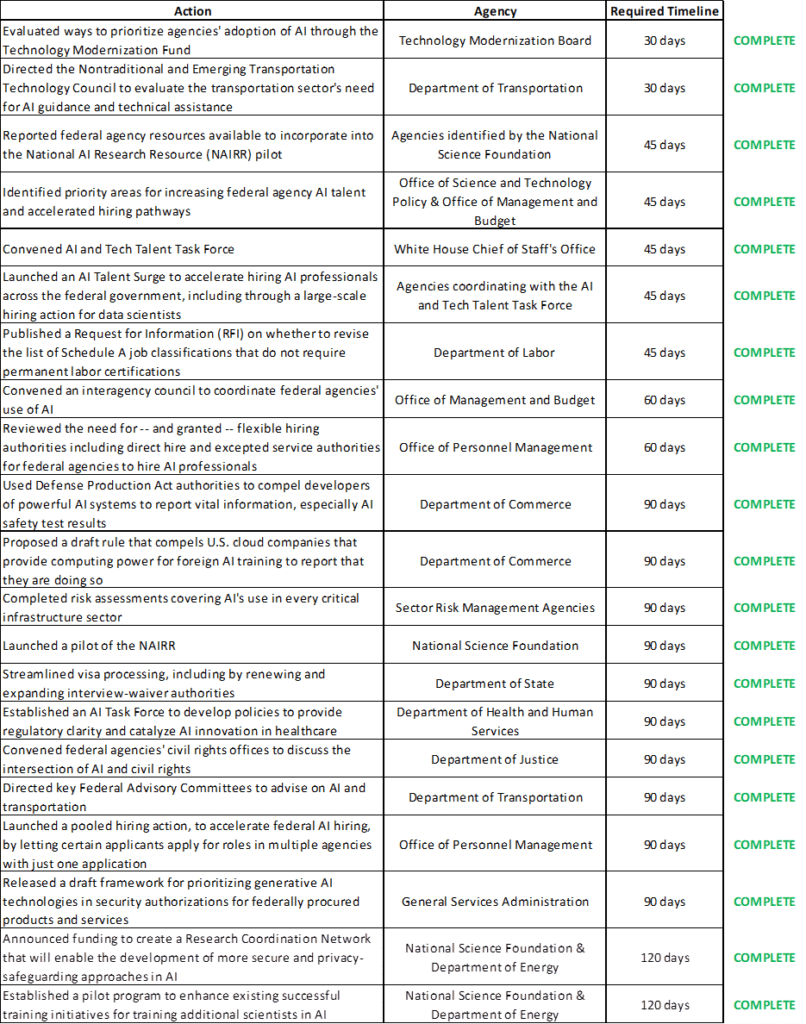One Year On: The Biden Administration’s Progress on Artificial Intelligence
Just a year ago, President Biden launched a groundbreaking Executive Order aimed at positioning the United States as a leader in harnessing the potential of artificial intelligence (AI) while also managing its associated risks. This Executive Order encompassed a wide scope of strategies aimed at ensuring safety, promoting innovation, and protecting the rights of American citizens.
Today, the Biden-Harris Administration proudly announces that federal agencies have successfully completed over one hundred tasks mandated by this Executive Order within the designated timeline. Here are some of the standout achievements from the past year in addressing the exciting promise and potential pitfalls of AI.
Safeguarding Safety and Security
One of the primary focuses of the Executive Order was to tackle the urgent safety and security risks posed by AI technologies. These risks can range from malicious uses by foreign actors to vulnerabilities in software. Over the past year, federal agencies have made considerable strides, including:
-
Mandatory Reporting: Utilizing the Defense Production Act, the government has required developers of high-power AI systems to report crucial safety and security information. The Department of Commerce has begun receiving regular updates on safety test outcomes and future training plans from these companies.
-
Testing and Evaluation: The U.S. AI Safety Institute (US AISI) has pioneered pre-deployment testing for new AI models, collaborating with leading developers to assess risks. The Department of Energy (DOE) has also expanded its capabilities, testing AI models for their potential impact on nuclear security.
-
National Security Memorandum: A historic National Security Memorandum directed federal agencies to ensure the U.S. maintains a global leadership position in safe and trustworthy AI while protecting human rights and democratic values.
- Combating Abuse: Efforts have also ramped up against AI-generated image-based sexual abuse. Under Vice President Harris’s leadership, initiatives were launched for AI developers to commit to curbing such misuse, highlighting the Administration’s commitment to combating online harassment.
Empowering Workers, Consumers, Privacy, and Civil Rights
As AI permeates various sectors, it’s crucial to protect individual rights and enhance workplace conditions. The administration has initiated several critical guidelines aimed at ensuring responsibility and fairness in the evolving landscape of AI:
-
Worker-Centric AI Guidelines: The Department of Labor has issued AI principles aimed at protecting worker interests and improving job quality. These guidelines assist employers and federal contractors in deploying AI ethically.
-
Healthcare Safety Program: The Department of Health and Human Services has established an AI Safety Program to monitor AI usage in healthcare settings, ensuring that patient rights and safety remain a priority.
-
Educational Initiatives: The Department of Education released guidance for educational technology developers, promoting AI that enhances learning while safeguarding student rights.
- Equitable Use in Housing: Guidelines issued for the housing sector affirm that existing discrimination laws also apply to AI applications, helping ensure fairness in tenant evaluations.
Harnessing AI for Good
The administration is not just focused on managing risks; it’s also keen on leveraging AI for positive outcomes. Initiatives include:
-
National AI Research Resource (NAIRR): This initiative gives over 150 research teams access to vital AI resources, enabling groundbreaking projects across various fields including medical diagnostics and environmental protection.
-
Educational Outreach: By training the next generation of AI experts, the administration is investing in a future workforce that can innovate responsibly.
- Significant Investments: Investments such as $68 million for scientific research illustrate the commitment to integrating AI in sectors that directly benefit society, like clean energy and healthcare.
Global Leadership in AI
The Executive Order directed the administration to fortify the U.S.’s role in global AI governance. Key initiatives include:
-
International Collaboration: The U.S. has co-sponsored a landmark resolution in the United Nations aimed at establishing safe and secure AI practices internationally.
-
AI Safety Networks: A new global network of AI Safety Institutes is in development to promote collaboration and standardization in AI safety protocols across countries.
- Responsible Practices Declaration: The commitment of 56 nations to a Joint Statement on Responsible Government Practices sets a foundation for ethical AI usage on an international scale.
Conclusion
In summary, the past year has seen a flurry of activity aimed at not only advancing AI technologies but also ensuring they are developed and utilized responsibly. The Biden administration’s focus on balancing innovation with safety and civil rights reflects a commitment to harnessing AI for the betterment of society while addressing its challenges.
The AI Buzz Hub team is excited to see where these breakthroughs take us. Want to stay in the loop on all things AI? Subscribe to our newsletter or share this article with your fellow enthusiasts.




